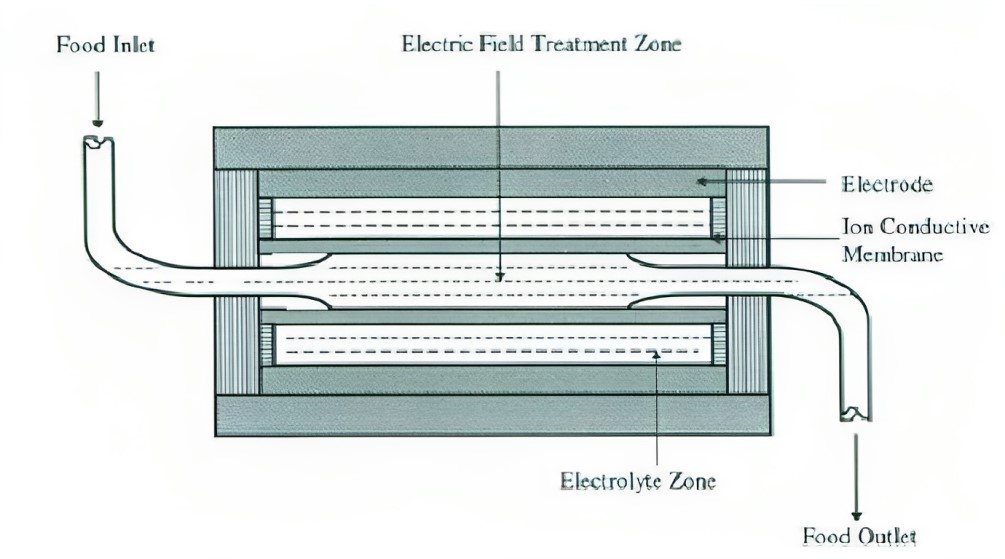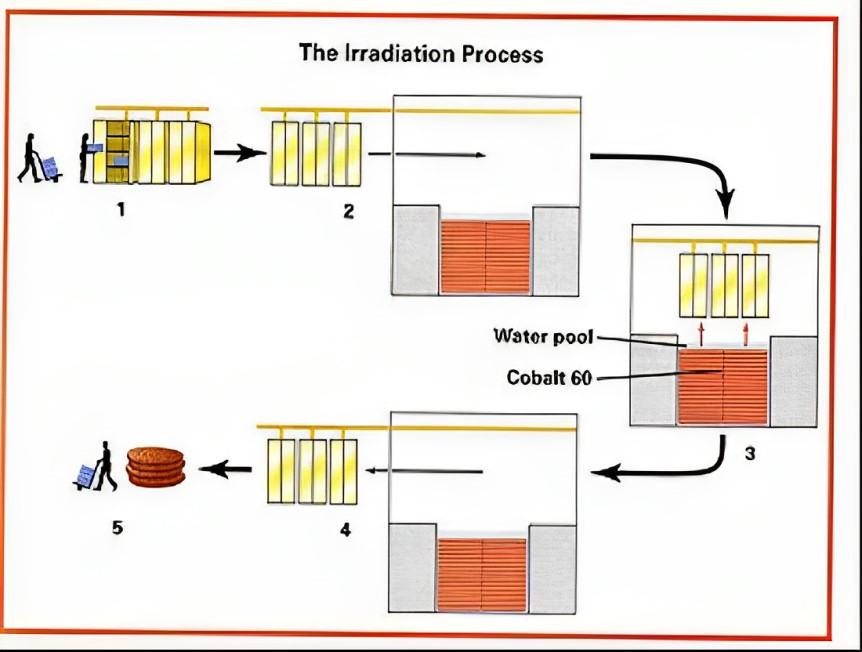The Role of Novel Processing Technologies in The Modern Food Industry
Shaswat Tiwari*, Mohd Kaif and Shabnam Singh
April 3rd 2025, 7:35:13 am | 5 min read

Introduction :
In today's food industry, paying close attention to consumer preferences is crucial for achieving success. This often involves reformulating products to incorporate healthier and more sustainable ingredients, adding proteins, vitamins, and antioxidants to enhance the nutritional value, and clearly labelling products as allergen-free, gluten-free, non-GMO, organic, or antibiotic-free. Additionally, there is a growing trend to reduce or eliminate caloric carbohydrates from food products, while measures are being implemented to extend the shelf life of food and prevent counterfeit products from infiltrating the supply chain. In the event of a recall, manufacturers are expected to act responsibly and proactively. Given the evolving conditions of the food market, the industrial sector must emphasize the need to adopt more adaptable equipment that incorporates bioengineering, automation, and robotics to streamline the production process efficiently. This approach aligns with the channels and technologies demanded by consumers, ultimately leading to significant changes in the manufacturing and supply of food products requested by the population. Another critical aspect to consider is the regulation of Food Safety Modernization. Beyond flexibility, prioritizing food safety is imperative. This entails using highly selective classification methods to reduce food waste, employing smaller batch processing machinery to minimize energy consumption, and incorporating inspection equipment for the detection and separation of even the tiniest foreign particles. The new technology that drives the food industry needs to be modernized in a way that makes it agile, easily adaptable to minor market changes in real-time, and focused on strict, sustainable cleaning practices. Moreover, it should be manageable by well-trained staff and engineers, particularly when it comes to biotechnology. From a technological perspective, this translates into faster reading times for vision equipment, self-diagnostic features for preventive maintenance, and improved connectivity and interoperability between systems, ensuring food safety, traceability, and product authenticity. The emerging trends and innovations in food processing techniques are a direct response to consumer demands for foods that promote health and boast high nutritional and nutraceutical values. Historically, the food industry's primary focus was on delivering safe, long-lasting food products. However, in the current landscape, it is no longer sufficient to merely ensure food safety; consumers now expect products that offer substantial nutritional benefits, contain bioactive compounds, and possess appealing sensory characteristics. The quality attributes of food, such as taste, texture, appearance, and nutritional value, are heavily influenced by the methods employed in food processing (Aguilar et al., 2019). The primary focus of food preservation procedures is to target microorganisms, which are the leading culprits behind food spoilage and contamination. These procedures, widely adopted by the food industry, revolve around either eliminating microorganisms or inhibiting their growth. Traditional heat-dependent methods for reducing pathogens, such as thermization, pasteurization, and in-container sterilization, can have adverse effects on taste, nutritional content, and visual appeal. To meet the rising consumer demand for higher quality and more precisely tailored food products, there has been a surge of interest in alternative techniques to traditional thermal processing. Many of these innovative food processing methods are often referred to as "novel" or "emerging" techniques. Among the recently introduced novel processing techniques are high-pressure processing (HPP), pulsed electric fields (PEF), ultrasonic treatment, irradiation, cold plasma, hydrodynamic cavitation, and others (Knorr et al., 2011).
Types of novel technologies in food processing -
1. High Pressure Processing
2. Pulse Electric Field
3. Irradiation
4. Ultrasound
5. Cold plasma
HPP (High-Pressure processing)-
High-pressure processing (HPP) stands out as a promising non-thermal preservation method, demonstrating its effectiveness as a viable substitute for traditional food preservation methods. (Balasubramaniam and Farkas, 2008) Pascalisation is based on activation volume that uses a transferring medium and is applied only in batch processing units. HPP is based on Le Chatelier’s principle indicating that an application of pressure shifts the equilibrium of the system to the state that occupies the lowest volume. Therefore, any chemical or physical changes (phase transitions, chemical reactions and changes in molecular configuration) accompanied by a decrease in volume are enhanced by the application of pressure. Consequently, non-covalent bonds are affected while key food quality parameters remain mostly unchanged. However, enzyme reactions can occur (e.g. during the pressure build-up phase before inactivation), adiabatic heating takes place (approx. 1-2 °C per 100 MPa) and temperature and pressure distribution is not entirely homogenous in processing units (Hameed et al., 2018). For food applications, ‘high pressure’ can be generally considered to be up to 600MPa for most food products (600MPa = 6000 bar = 6000 atmospheres = 87 000 psi). With increasing pressure, the food reduces in overall size in proportion to the pressure applied but retains its original shape. Hence, a delicate food such as a grape can be subjected to 600 MPa of isostatic pressure and emerge apparently unchanged although the different rates and extents of compressibility of the gaseous (air), liquid and solid phases may lead to some physical damage. Pressure kills microorganisms, including pathogens and spoilage organisms, leading to high-quality food with a significantly longer and safer chilled shelf life. (Brennan., 2006).

Fig. High Pressure Processing
PFE (Pulse electric field) -
In recent years, pulsed electric field as an emerging technology has got wide interest for pasteurization of heat-sensitive liquid food (Mathys et al., 2013). PEF is a method that uses electric waves with high voltage amplitude. Short electrical impulses (from microseconds to milliseconds each) of high voltage (typically 10–80 kV/ cm) are supplied to the product placed between the electrodes in the chamber (Deeth et al., 2008). Depending on the properties of the processed food product and the effects to be obtained, the process conditions such as electric field strength (kV/cm), pulse frequency, pulse width, shape of the pulse wave and exposure time (related to the flow rate and volume of fluid in the electrode chamber) can be modified suitably. PEF induces the creation of pores in tissues through the electroporation process, achieved by subjecting them to short high-voltage pulses within the 10-80 KV/cm range. This action leads to the permeabilization of cell membranes. Electroporation can be classified as either reversible or irreversible, depending on how the electric field strength and treatment intensity are carefully optimized (Zimmermann, 1986). Pulsed electric field technology has been effectively employed for the pasteurization of liquid and semi-solid food items such as juices, milk, yoghurt, soups, and liquid eggs. However, the application of PEF processing is restricted to food products that lack air bubbles and possess low electrical conductivity. Additionally, to ensure appropriate treatment, the maximum particle size in the liquid should be smaller than the gap of the treatment region in the PEF chamber. Researchers have explored the impact of applying PEF at low electric fields, either independently or in conjunction with heating, with the aim of enhancing the extraction yield of intracellular compounds found in fruits and vegetables. (Donsì et al., 2010).

Fig. Pulse electric field
Irradiation -
Irradiation technology is garnering increasing global attention. When compared to heat or chemical treatment, irradiation proves to be a more effective and suitable method for eliminating foodborne pathogens. This technology enhances food safety by eradicating bacteria, much like the pasteurization process. Importantly, irradiation does not render food radioactive for two key reasons. First, the gamma rays generated from cobalt-60, which is commonly used in food irradiation, lack the energy to make the food radioactive. Second, as food never directly contacts the radiation source, there is no possibility of food becoming contaminated with radioactive material. In the evolving landscape of international trade, the shift toward irradiation as a food processing method holds significant importance. Radiation technology is swiftly gaining recognition as a remarkable solution for meeting the sanitary and phytosanitary requirements of importing countries. It is worth noting that food, once irradiated, may remain susceptible to recontamination unless it is appropriately packaged. Therefore, when irradiation treatment aims to control microbiological spoilage or insect infestation, prepackaging becomes an integral component of the process (Kalyani and Manjula, 2014).

Fig. Irradiation
References -
Aguilar, C.N., Ruiz, H.A., Rubio Rios, A., Chávez-González, M., Sepúlveda, L., Rodríguez-Jasso, R.M., Loredo-Treviño, A., Flores-Gallegos, A.C., Govea-Salas, M., and Ascacio-Valdes, J.A. (2019). Emerging strategies for the development of food industries. Bioengineered, 10(1), 522-537. DOI: 10.1080/21655979.2019.1682109.
Knorr, D., Froehling, A., Jaeger, H., Reineke, K., Schlueter, O., and Schoessler, K. (2011). Emerging technologies in food processing. Annual Review of Food Science and Technology, 203-235.
Balasubramaniam, V.M., and Farkas, D. (2008). High-pressure food processing. Food Science and Technology International, 14, 413.
Hameed, F., Ayoub, A., and Gupta, N. (2018). Novel food processing technologies: An overview. International Journal of Chemical Studies, 6(6), 770-776.
Brennan, G.J. (2006). Food Processing Handbook. WILEY-VCH Verlag GmbH & Co.
Mathys, A., Toepfl, S., Siemer, C., Favre, L., Benyacoub, J., and Hansen, C.E. (2013). Pulsed electric field treatment process and dairy product comprising bioactive molecules obtainable by the process. International Journal of Chemical Studies, 1-776.
Deeth, H.C., Datta, N., Ross, A.I.V., and Dam, X.T. (2008). Pulsed electric field technology: effect on milk and fruit juices. In T. Gaurav, and V.K. Juneja (Eds.), Advances in Thermal and Non-Thermal Food Preservation. Wiley-Blackwell, Hoboken.
Zimmermann, U. (1986). Electrical breakdown, electro permeabilization, and electrofusion. Reviews of Physiology, Biochemistry, and Pharmacology, 105, 176-257.
Donsì, F., Ferrari, G., and Pataro, G. (2010). Applications of pulsed electric field treatments for the enhancement of mass transfer from vegetable tissue. Food Engineering Reviews, 2(2), 109-130.
Kalyani, B., and Manjula, K. (2014). Food Irradiation - Technology and Application. International Journal of Current Microbiology and Applied Sciences, 3(4), 549-555.
Gallo, M., Ferrara, L., and Naviglio, D. (2018). Application of Ultrasound in Food Science and Technology: A Perspective. Foods, 7(10), 164. DOI: 10.3390/foods7100164.
Pankaj, S.K., Bueno-Ferrer, C., Misra, N.N., Milosavljević, V., O'Donnell, C.P., Bourke, P., Keener, K.M., and Cullen, P.J. (2014). Applications of cold plasma technology in food packaging. Trends in Food Science & Technology, 35, 5-17.
Laroque, D.A., Seó, S.T., Ayala Valencia, G., Laurindo, J.B., and Carciofi, B.A.M. (2022). Cold plasma in food processing: Design, mechanisms, and application. Journal of Food Engineering, 312, 110748.
Sarangapani, C., Devi, Y., Thirundas, R., Annapure, U.S., & Deshmukh, R.R. (2015). Effect of low-pressure plasma on physico-chemical properties of parboiled rice. LWT - Food Science and Technology, 63, 452-460.